Wildlife at Sea
-
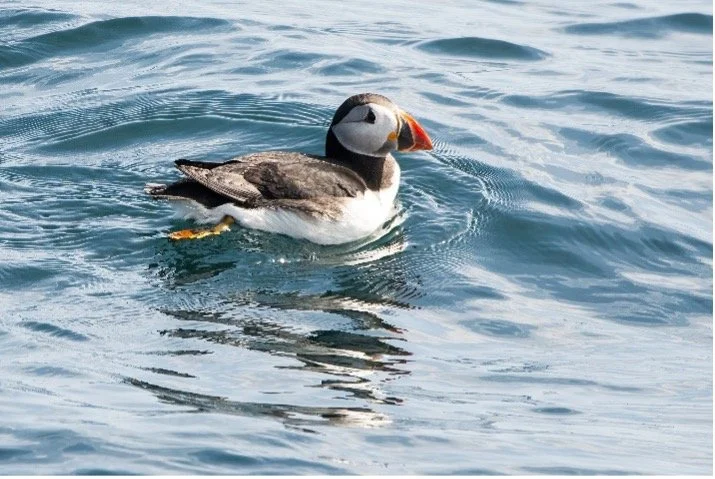
Sea birds
The Isles of Scilly are a haven for seabirds, offering some of the best breeding and viewing opportunities in the UK. Among the most iconic are the Atlantic puffins, which nest in small colonies on remote islets.
The cliffs and sea stacks also host thriving populations of Razorbills, Guillemots, Fulmars, and the ever-present Shags and Cormorants, often seen drying their wings on the rocks. Kittiwakes, Herring Gulls, and Great Black-Backed Gulls are widespread, while Oystercatchers with their bright bills and loud calls are commonly found along shorelines. These uninhabited islands and rugged coasts provide essential nesting grounds for Manx Shearwaters, making Scilly a vital stronghold for Britain’s coastal birdlife -

Atlantic grey seal
The Atlantic grey seals around the Isles of Scilly are one of the UK’s most important seal populations, thriving among the archipelago’s quiet coves and uninhabited islets.
As the largest land-breeding mammals in Britain,
these seals can grow over 2.5 metres long and are easily recognised by their long, sloping "Roman noses." Each has a unique coat pattern, and they’re often curious around boats and swimmers,
especially in the clear waters of Scilly. Autumn brings the birth of fluffy white pups on remote beaches, making this a vital breeding ground. -

Dolphins
The waters surrounding the Isles of Scilly are home to dolphins and porpoises, two of the most captivating sights you might encounter on a boat trip.
Sleek, social common dolphins are often seen racing alongside boats, leaping through the waves in playful pods. In contrast, the smaller harbour porpoise is shy and elusive, surfacing quietly with just a gentle roll of its back and fin. Occasionally, you may also spot Risso’s or bottlenose dolphins, recognised by their distinctive markings and powerful presence. These intelligent marine mammals are drawn to Scilly’s rich, productive waters, feeding on shoals of fish and sometimes approaching the boat out of curiosity. Watching them in their natural environment is an unforgettable experience
-
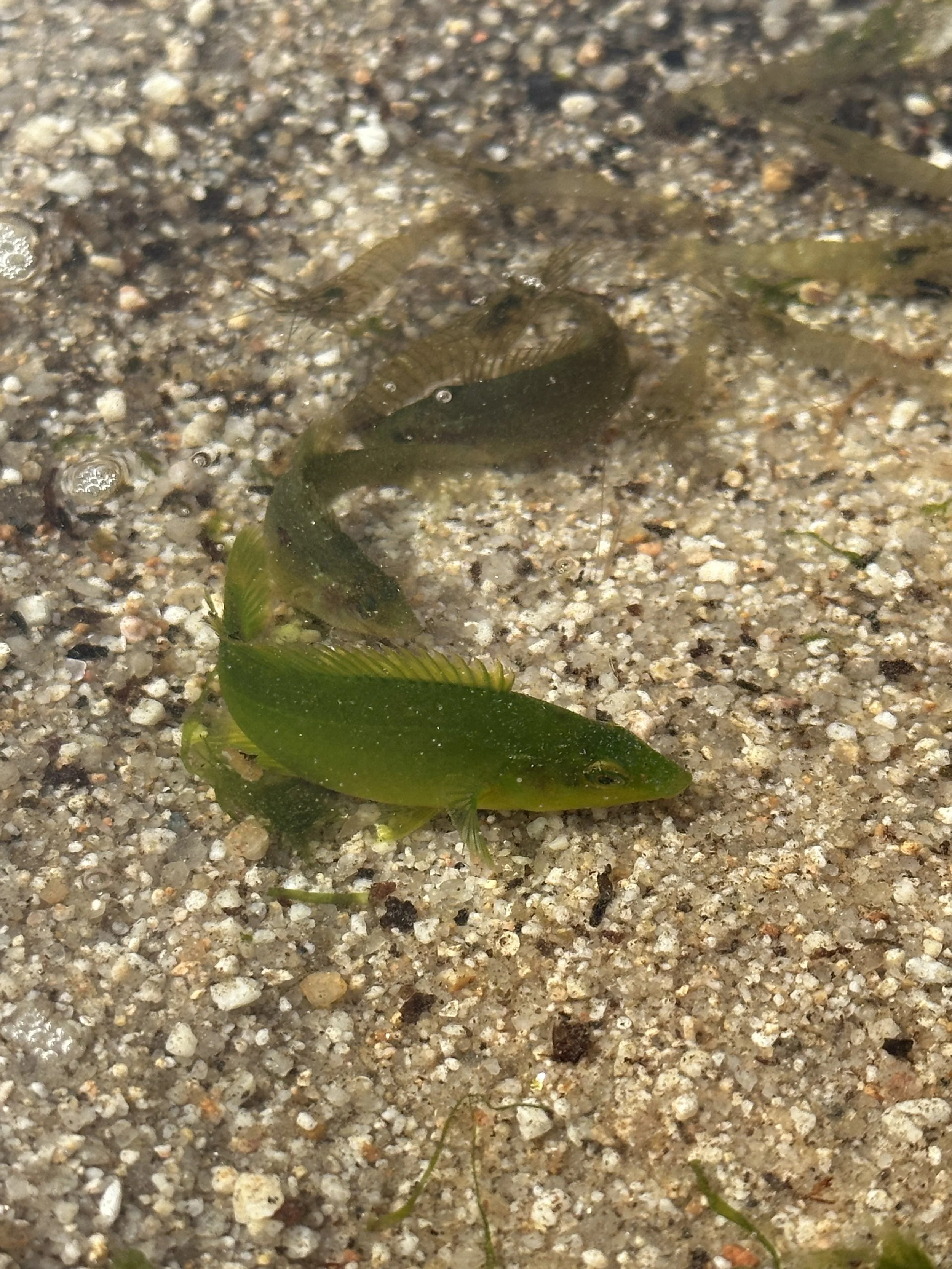
Fish
The clear, sheltered waters of the Isles of Scilly are home to an incredible variety of fish, thriving among kelp forests, rocky reefs, and sandy bays. Shimmering shoals of Sand Eels, Pollack, and Mackerel dart through the shallows, while Wrasse, Gobies, and Blennies add flashes of colour among the rocks. In deeper waters around the Northern Rocks, Conger Eels and Dogfish patrol the seabed. The islands’ rich marine habitats support a delicate balance of species, making Scilly one of the UK’s most biodiverse marine areas.
-

Seagrass
Beneath the turquoise waters of the Isles of Scilly lies a hidden underwater meadow of seagrass, one of the most important habitats in the islands. These lush green beds, formed mainly by eelgrass (Zostera marina), sway gently with the tide and provide shelter for countless marine creatures — from juvenile fish and Seahorses to Crabs, Cuttlefish, and Anemones. Acting as natural nurseries, the seagrass meadows are vital for the health of Scilly’s marine ecosystem, helping young sea life grow in safety while stabilising the seabed and filtering the water around them. They also play a crucial role in capturing and storing carbon, making them one of the ocean’s unsung climate heroes.
-

Crustaceans
The rocky shores and seabeds around the Isles of Scilly are teeming with crustaceans, the busy scavengers and hunters of the marine world. Among the seaweed and crevices, you might spot Spider crabs, Velvet swimming crabs, and the striking edible Brown crab with its powerful claws and pie-crust shell. These creatures play a vital role in keeping Scilly’s coastal ecosystems healthy, recycling nutrients and supporting a rich food web that sustains fish, seabirds, and seals alike.
-
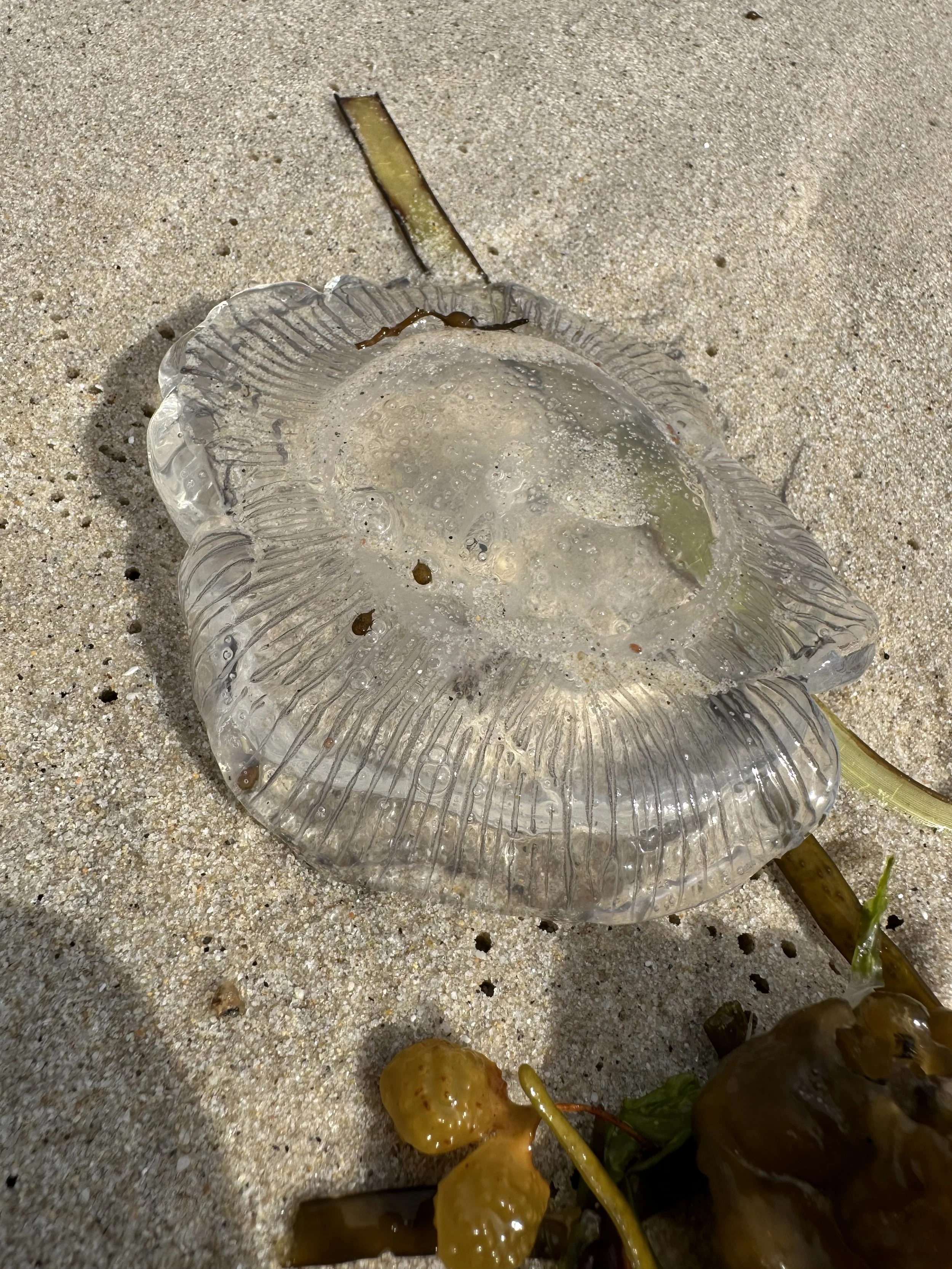
jellyfish
The waters around the Isles of Scilly host a variety of jellyfish, graceful drifters that pulse gently through the currents. From the delicate, translucent moon jellyfish to the striking compass jellyfish marked with golden rings, these creatures are a mesmerising part of Scilly’s summer seas. Occasionally, larger visitors such as the barrel jellyfish appear — gentle giants that can grow to the size of a dustbin lid yet pose little threat to humans. More rarely, strong Atlantic winds can bring in the Portuguese man o’ war, a vivid blue and purple visitor that floats on the surface like a tiny sailing ship. Despite its beauty, it’s not a true jellyfish but a colony of organisms working together, trailing long tentacles capable of delivering a painful sting.
-
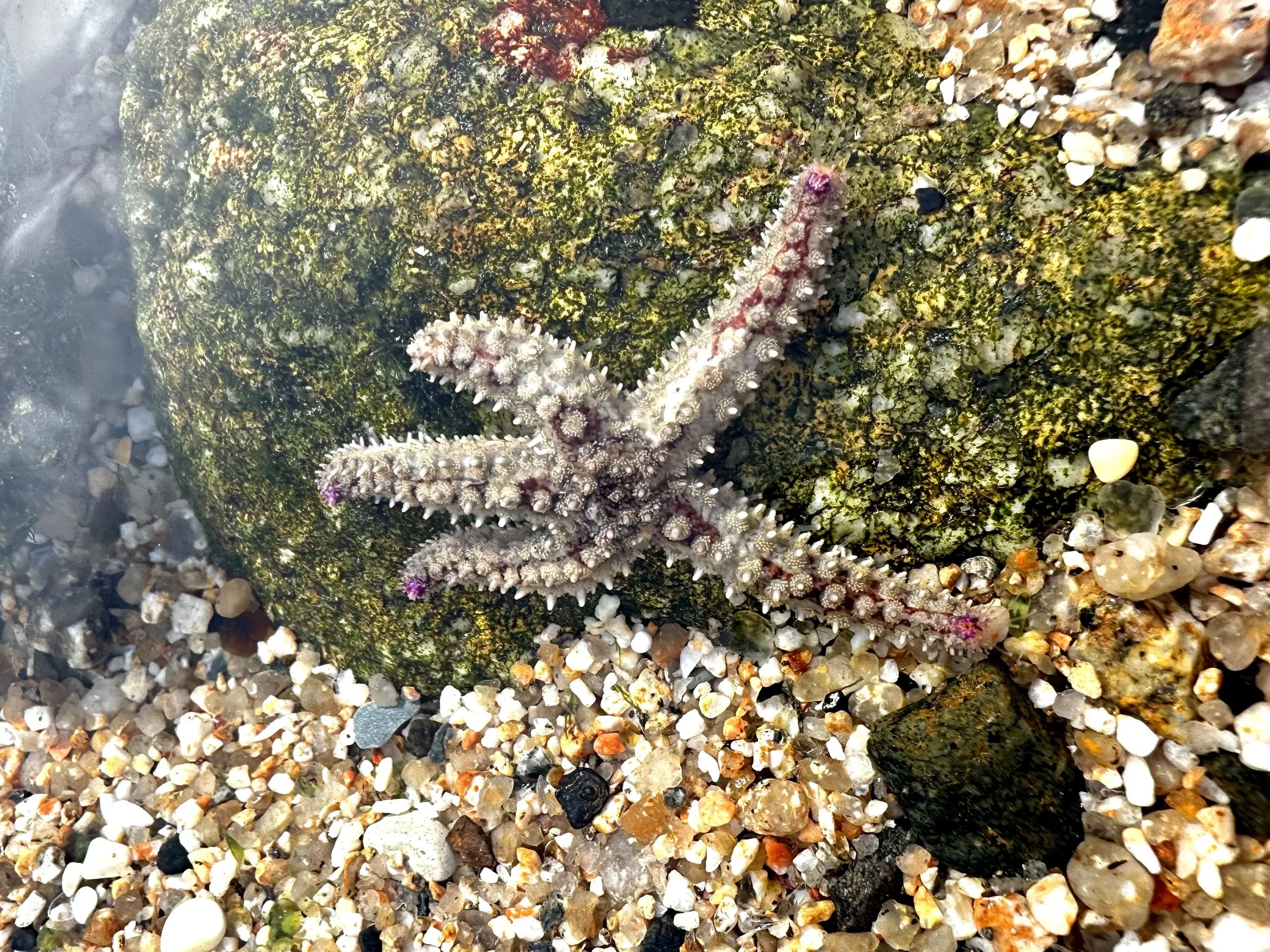
starfish
The rocky reefs and sandy seabeds of the Isles of Scilly are home to a fascinating variety of starfish. The familiar Common starfish is often seen clinging to rocks or gliding slowly across the sand on hundreds of tiny tube feet, while the vibrant Spiny starfish and delicately patterned Bloody Henry add bursts of colour to the underwater landscape. In deeper waters, the impressive Sunstar, with its many arms, can be spotted hunting for prey along the seabed. Starfish play a vital role in maintaining balance within the marine ecosystem, feeding on mussels and other shellfish while providing food for crabs and fish in turn. After storms, they sometimes wash up in their hundreds, a striking reminder of the life teeming just offshore.
-
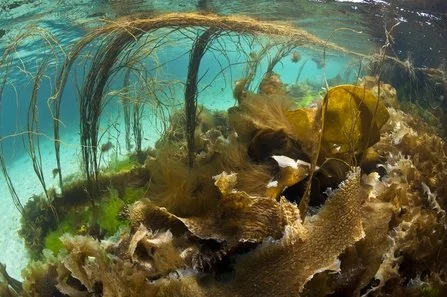
Seaweed
These underwater canopies, formed by species such as Kelp, Bladderwrack, and Thongweed, create one of the richest and most productive habitats in the islands. Among the fronds, fish, crabs, starfish, and sea snails find shelter and food, while seals and seabirds hunt in the abundant waters nearby. Beyond their beauty, seaweeds play a crucial ecological role — producing oxygen, absorbing carbon, and buffering the coastline against storms. They’ve also long supported island life, used as natural fertiliser and, more recently, as inspiration for sustainable food and skincare products.
